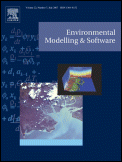Environmental Data Science
Abstract
Environmental data are growing in complexity, size, and resolution. Addressing the types of large, multidisciplinary problems faced by today’s environmental scientists requires the ability to leverage available data and information to inform decision making. Successfully synthesizing heterogeneous data from multiple sources to support holistic analyses and extraction of new knowledge requires application of Data Science. In this paper, we present the origins and a brief history of Data Science. We revisit prior efforts to define Data Science and provide a more modern, working definition. We describe the new professional profile of a data scientist and new and emerging applications of Data Science within Environmental Sciences. We conclude with a discussion of current challenges for Environmental Data Science and suggest a path forward.
Download full text in pdf format
 Published as:
Published as:
K. Gibert,
J. S. Horsburgh,
I. N. Athanasiadis,
G. Holmes,
Environmental Data Science,
Environmental Modelling and Software, 106:4-12,
2018, doi:10.1016/j.envsoft.2018.04.005.
You might also enjoy (View all publications)
- CY-Bench: A comprehensive benchmark dataset for sub-national crop yield forecasting
- Hybrid phenology modeling for predicting temperature effects on tree dormancy
- To measure or not: A cost-sensitive, selective measuring environment for agricultural management decisions with reinforcement learning
